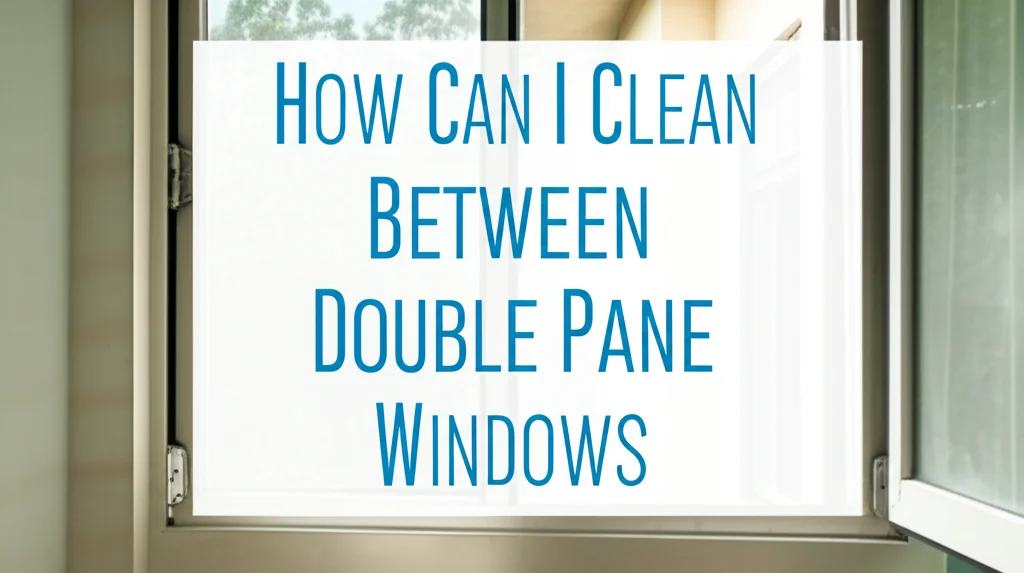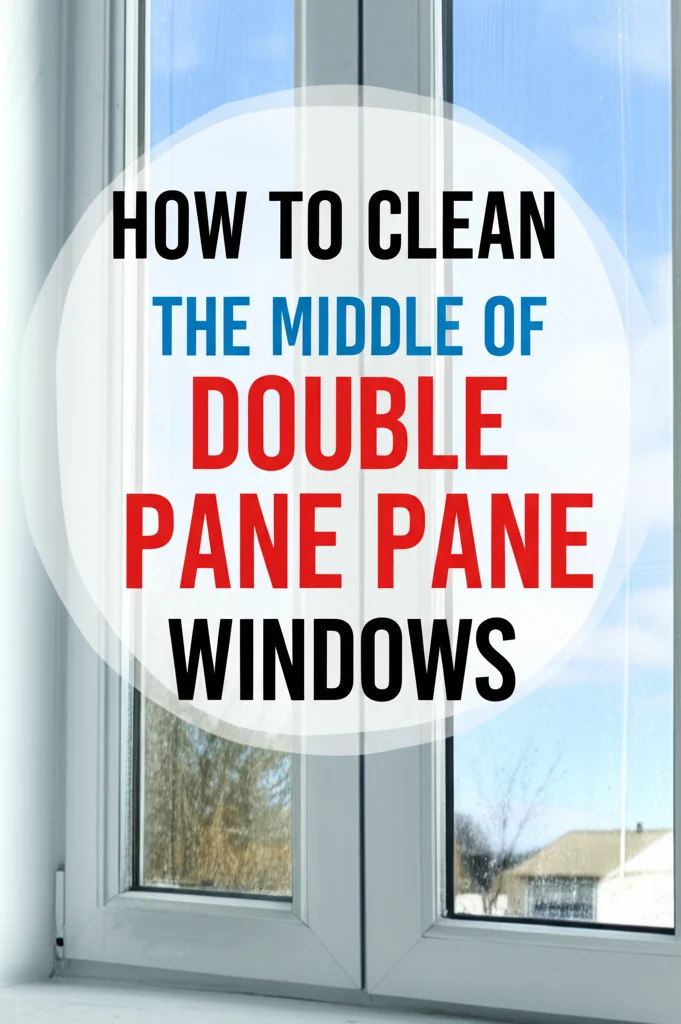· Home Cleaning · 7 min read
How Can I Clean Between Double Pane Windows

Cleaning Between the Panes: A Clear View is Possible
Have you noticed dust, streaks, or even condensation building up between the panes of your double-pane windows? It’s a frustrating sight, diminishing your view and making your windows look dirty even after cleaning the glass. Many homeowners assume this means a window replacement is necessary, but often, a little know-how can restore clarity. This article will guide you through the process of cleaning between double pane windows, exploring the causes of the buildup and offering practical solutions. We’ll cover everything from identifying if cleaning is even possible to the tools and techniques you’ll need for a sparkling result.
Can you actually clean between window panes?
Generally, cleaning between double-pane windows isn’t a DIY project. The sealed unit needs to be disassembled, cleaned, and resealed to prevent moisture and air from re-entering. However, there are some limited situations where you can address minor issues, which we’ll explore.
Why Does Dirt Get Between Window Panes?
Understanding why dirt accumulates between your window panes is the first step to addressing the problem. Double-pane windows are designed to be airtight, filled with an inert gas like argon or krypton to improve insulation. However, seals can fail over time due to age, temperature fluctuations, or improper installation. When the seal breaks, moisture and air can enter the space between the panes, carrying dust and debris with it.
Here’s a breakdown of common causes:
- Seal Failure: This is the most frequent culprit. A compromised seal allows air and moisture to enter.
- Desiccant Saturation: The small spacer inside the window contains a desiccant to absorb any initial moisture. Once saturated, it can no longer protect against condensation.
- Temperature Changes: Extreme temperature swings can cause the glass and frame to expand and contract, stressing the seal.
- Window Age: Over time, the materials used in the seal naturally degrade.
Assessing the Situation: Is DIY Cleaning Possible?
Before you grab your cleaning supplies, it’s crucial to assess the situation. Not all dirty windows between panes are suitable for DIY attempts. If the seal is completely broken and there’s significant condensation or discoloration, attempting to clean it yourself could worsen the problem.
Here’s how to evaluate:
- Condensation Level: A little condensation that clears up quickly might indicate a minor issue. Persistent, heavy condensation suggests a major seal failure.
- Discoloration: Brown or black discoloration indicates mold or mildew growth, a sign of significant moisture intrusion.
- Seal Integrity: Carefully inspect the edges of the glass for any visible gaps or cracks in the seal.
- Window Age: Older windows are more likely to have seal failures.
If you suspect a major seal failure, it’s best to consult a professional window repair service. Trying to disassemble and reseal the window yourself can be tricky and may void any warranties. However, if the issue is minor, you might be able to improve the appearance with some careful cleaning.
Tools You’ll Need for Limited Cleaning
If you’ve determined that a limited cleaning attempt is safe, gather these tools:
- Spray Bottle: For applying cleaning solution.
- Distilled Water: Using distilled water prevents mineral deposits.
- Isopropyl Alcohol: Helps cut through grime and evaporates quickly.
- Microfiber Cloths: Lint-free cloths are essential for streak-free cleaning.
- Cotton Swabs: For reaching tight corners.
- Vacuum with Hose Attachment: To remove loose debris.
- Gloves: To protect your hands.
Important Note: These tools are for limited cleaning, meaning addressing surface dust and minor streaks after a professional has disassembled and cleaned the unit. We’ll discuss this further in the next section.
The Cleaning Process: A Step-by-Step Guide
This process assumes a professional has already disassembled the window unit. Do not attempt to disassemble a sealed window yourself unless you are a qualified professional.
- Vacuum Loose Debris: Use the hose attachment of your vacuum to gently remove any loose dust or dirt from the inner surfaces of both panes.
- Prepare Cleaning Solution: Mix equal parts distilled water and isopropyl alcohol in your spray bottle.
- Apply Cleaning Solution: Lightly spray the cleaning solution onto a microfiber cloth (not directly onto the glass).
- Wipe the Glass: Gently wipe both the inner and outer panes with the damp microfiber cloth, using a circular motion.
- Reach Tight Corners: Use cotton swabs dipped in the cleaning solution to clean hard-to-reach areas, like the edges of the glass and around the spacer.
- Dry Thoroughly: Use a clean, dry microfiber cloth to wipe away any remaining moisture. Ensure the glass is completely dry before reassembly.
- Professional Reassembly: A professional will then reseal the window unit, ensuring an airtight seal.
Preventing Future Buildup: Maintaining Window Health
Once your windows are clean, taking steps to prevent future buildup is crucial. Here are some preventative measures:
- Regular Exterior Cleaning: Keep the exterior of your windows clean to prevent dirt and grime from contributing to the problem.
- Monitor for Condensation: Regularly check for signs of condensation between the panes. Early detection can help you address issues before they worsen.
- Proper Ventilation: Ensure adequate ventilation in your home to reduce humidity levels.
- Professional Inspections: Schedule periodic inspections by a window professional to assess the condition of your seals and identify potential problems.
- Consider Window Film: Applying a low-E window film can help reduce heat transfer and minimize condensation.
When to Call a Professional Window Repair Service
While some minor cleaning can be done after disassembly, many situations require professional intervention. Here are some signs it’s time to call an expert:
- Significant Condensation: Persistent, heavy condensation indicates a major seal failure.
- Discoloration: Brown or black discoloration suggests mold or mildew growth.
- Broken Seal: Visible gaps or cracks in the seal.
- Difficulty Opening/Closing: If the window is difficult to open or close, it could be a sign of structural issues.
- Energy Bills: A sudden increase in energy bills could indicate a loss of insulation due to seal failure.
A professional can accurately diagnose the problem and provide the appropriate solution, whether it’s seal replacement, glass replacement, or even full window replacement.
FAQ: Addressing Common Concerns
Q: Can I use vinegar to clean between window panes?
A: While vinegar is a good cleaner, it’s not recommended for this situation. Vinegar can leave streaks and potentially damage the seal. A mixture of distilled water and isopropyl alcohol is a safer and more effective option.
Q: How long does a window seal typically last?
A: The lifespan of a window seal varies depending on factors like climate, window quality, and installation. Generally, you can expect a seal to last between 10 and 20 years.
Q: Is it worth repairing double-pane windows, or should I replace them?
A: This depends on the extent of the damage. If only the seal is broken, repair is usually cost-effective. However, if the glass is cracked or damaged, replacement may be the better option.
Q: What causes the spacer between the panes to turn gray?
A: The gray color is often caused by the desiccant inside the spacer becoming saturated with moisture and oxidizing. This indicates a seal failure.
Conclusion: Enjoying a Clear View Again
Cleaning between double pane windows can seem daunting, but understanding the causes of the buildup and knowing when to seek professional help can make all the difference. While limited cleaning is possible after professional disassembly, addressing the root cause – a failed seal – is crucial for long-term clarity and energy efficiency. By following the preventative measures outlined in this guide, you can help maintain the health of your windows and enjoy a clear, unobstructed view for years to come. Don’t hesitate to contact a qualified window repair service if you suspect a significant problem. A clear view is within reach!




